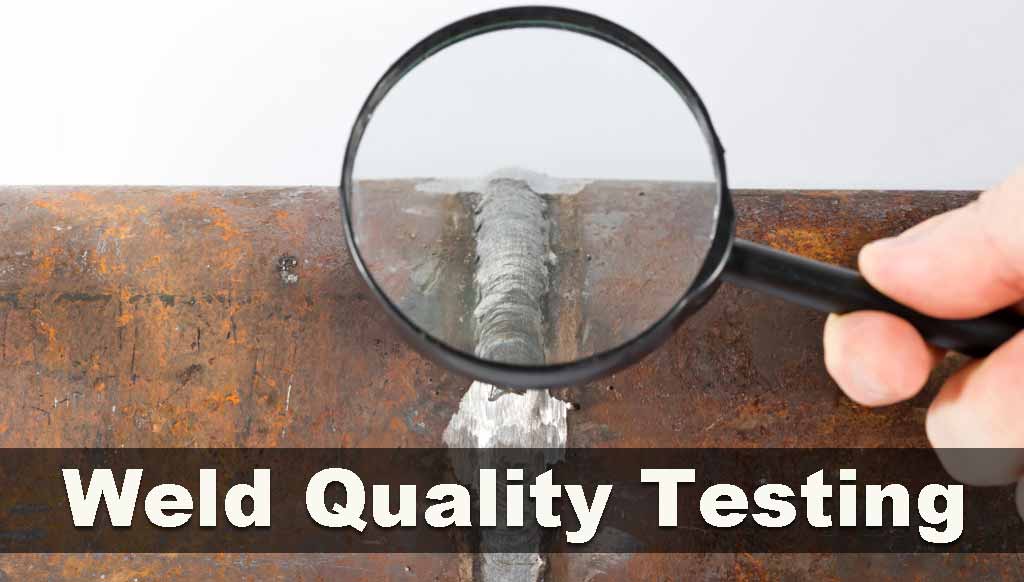How Welding Inspection Milwaukee Makes Sure Safety and Quality in Your Tasks
How Welding Inspection Milwaukee Makes Sure Safety and Quality in Your Tasks
Blog Article

Checking Out the Various Methods and Requirements of Welding Assessment for Getting Conformity and Dependability in Design Applications
The relevance of welding assessment in design applications can not be overemphasized, as it functions as a critical protect for ensuring architectural stability and compliance with industry requirements. Numerous approaches, consisting of aesthetic examination and progressed non-destructive screening methods, offer essential insights right into the top quality of welds. Additionally, adherence to recognized governing requirements such as those from AWS and ASME develops a structure for accountability and quality. The landscape of welding examination is consistently progressing, prompting a better examination of emerging practices and their ramifications for engineering reliability. What might these advancements entail for future jobs?
Importance of Welding Evaluation
Welding examination plays a vital duty in making sure the honesty and safety and security of bonded frameworks. The relevance of welding inspection can not be overemphasized, as it serves as a guard versus prospective failures that might result from poor welding methods.
Furthermore, welding evaluation is essential for maintaining quality control throughout the welding process. It makes certain that the welds meet the necessary mechanical and physical properties needed for their desired applications. Normal evaluations additionally foster a culture of responsibility and constant renovation within welding procedures, encouraging adherence to finest methods and sector criteria.
In regulated industries such as production, aerospace, and construction, strict welding inspection procedures are mandated to abide with lawful and security requirements. Inevitably, efficient welding evaluation not only protects human life and residential property but likewise enhances the longevity and dependability of welded structures, making it a crucial element of engineering and building.

Common Welding Inspection Approaches
A selection of assessment methods are utilized to assess the quality and integrity of welds, each tailored to find particular sorts of problems. Among the most common methods is visual inspection, which includes a detailed exam of the weld surface to identify visible imperfections such as fractures, damages, and inadequate fusion. This method is frequently the initial step in the inspection process because of its simpleness and cost-effectiveness.
Another commonly used approach is radiographic examination, where X-rays or gamma rays pass through the weld to disclose inner issues. This method is particularly reliable for detecting porosity and incorporations within the weld material. Similarly, ultrasonic screening utilizes high-frequency acoustic waves to identify inner imperfections, supplying an in-depth evaluation of the weld's stability.
Furthermore, magnetic bit assessment is made use of for ferromagnetic materials, enabling the detection of surface and near-surface problems by observing and applying magnetic fields fragment patterns. Dye penetrant screening involves using a fluid dye to the weld surface, disclosing fractures and various other interruptions upon inspection (Welding Inspection Milwaukee). Each of these techniques plays a critical function in guaranteeing weld top quality and conformity with industry standards
Non-Destructive Testing Techniques
Non-destructive testing (NDT) methods are necessary devices in the assessment of weld quality, permitting examiners to assess the honesty of welded joints without triggering damage to the products. Numerous NDT methods are utilized to determine prospective problems, ensuring that welds fulfill the needed requirements for safety and security and efficiency.
One of one of the most common techniques is ultrasonic screening (UT), which uses high-frequency acoustic waves to detect internal defects such as voids or cracks. Radiographic screening (RT) uses X-rays or gamma rays to create images of welds, disclosing any interruptions within the material. Magnetic fragment testing (MT) works for identifying surface and near-surface problems in ferromagnetic materials via the application of electromagnetic fields and contrasting particles.
Fluid penetrant testing (PT) is another commonly used technique that involves using a dye to the surface of the weld, which leaks into any splits, making them noticeable under ultraviolet light. Each of these techniques offers unique benefits and restrictions, and the choice of an ideal strategy is essential to attaining exact evaluations of weld stability. Inevitably, the execution of NDT methods considerably adds to the reliability and safety and security of engineering applications.

Regulative Specifications and Compliance
In the world of welding inspection, adherence to regulatory requirements and conformity is vital to guarantee the safety and dependability of welded frameworks (Welding Inspection Milwaukee). Various organizations, consisting of the American Welding Society (AWS), the American Culture of Mechanical Designers (ASME), and the International Company for Standardization (ISO), have established guidelines that control welding methods and inspection procedures. These requirements offer a framework for top quality assurance, detailing the necessary credentials for examiners and the methods for assessing weld honesty
Conformity with these regulative criteria not only boosts the structural integrity of bonded assemblies yet also alleviates dangers connected with failures, which can have devastating consequences. Examinations have to be carried out using specified procedures, including visual, ultrasonic, and radiographic techniques, to guarantee that welds fulfill defined requirements.
Furthermore, adherence to these requirements is commonly required by law, specifically in sectors such as production, aerospace, and building. Routine audits and qualifications are necessary to keep conformity, therefore cultivating a society of security and quality within companies. Inevitably, regulative Learn More Here requirements and compliance act as the backbone of reliable welding inspection practices, making sure that engineered frameworks satisfy both performance assumptions and security requirements.
Finest Practices for Welding Assessment
While keeping conformity with governing requirements is critical, implementing best practices for welding inspection additionally boosts the security and integrity of welded frameworks. Reliable welding examination begins with comprehensive planning, which consists of comprehending the specific needs of each task and ensuring examiners are trained in relevant methods and standards.
Utilizing a detailed assessment checklist assists to guarantee all critical aspects are evaluated, such as weld dimension, penetration, and aesthetic defects. Non-destructive screening (NDT) methods, such as ultrasonic or radiographic screening, ought to be used where appropriate, providing a much more extensive analysis of weld top quality without endangering the integrity of the materials.
Paperwork plays a significant duty in finest practices; maintaining precise documents of assessments, including pictures, test outcomes, and conformity reports, makes certain liability and promotes future evaluations. Furthermore, fostering a society of open communication between welders and inspectors can lead to early recognition of potential problems, promoting immediate restorative activities.
Verdict
In recap, the execution of extensive welding examination approaches and adherence to established criteria are essential for guaranteeing compliance and reliability in engineering applications - Welding Inspection Milwaukee. Techniques such as aesthetic assessment, radiographic testing, and ultrasonic screening serve as essential devices in keeping and determining flaws top quality assurance. By cultivating a culture of liability and quality, organizations can improve the honesty and longevity of bonded structures, inevitably adding to the security and efficiency of design projects
Numerous methods, including aesthetic inspection and progressed non-destructive screening methods, offer vital understandings into the high quality of welds.Welding assessment plays discover here a crucial function in guaranteeing the More hints stability and security of bonded structures.A range of assessment methods are utilized to examine the high quality and integrity of welds, each customized to detect certain types of flaws.Another widely used method is radiographic assessment, where X-rays or gamma rays penetrate the weld to reveal inner issues.In the world of welding examination, adherence to governing criteria and compliance is vital to guarantee the safety and security and dependability of welded frameworks.
Report this page